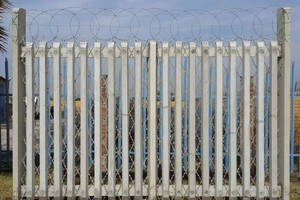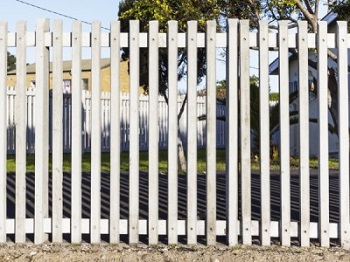 If you want to paint your concrete walls, you will have to follow a few simple steps. Before you begin, make sure that the walls are completely dry. Also, make sure that you wear a respirator mask when you are painting, as paint fumes can cause health problems. If you don't want to be exposed to dangerous dust particles and fumes, you can purchase a mask from Lowes or Home Depot.
If you want to paint your concrete walls, you will have to follow a few simple steps. Before you begin, make sure that the walls are completely dry. Also, make sure that you wear a respirator mask when you are painting, as paint fumes can cause health problems. If you don't want to be exposed to dangerous dust particles and fumes, you can purchase a mask from Lowes or Home Depot.
Oil-based paints
You have many choices for painting your concrete walls. While there are some types of concrete paints that require little maintenance, others may need frequent polishing or waxing. Read labels carefully to determine what type of care is required and whether you can commit to the upkeep. Here are some things to keep in mind when choosing a concrete paint. The main purpose of a paint on a concrete wall is to protect it from the elements, so choose a product that's easy to care for.
Oil-based paints contain volatile organic compounds (VOCs), which are chemicals that are released into the air when the paint dries. Organic solvents are made from plants and petrochemicals, and they emit a strong odour when they dry. These chemicals are not only bad for the environment, but can be toxic to humans. High exposure to VOCs can cause headaches, nausea, and skin irritation.
Acrylic latex paints
If you're looking for an inexpensive way to decorate your interior or exterior concrete walls, you can consider using latex paint. While some types of paint are better suited for particular surfaces than others, most acrylic latex paints can be used on concrete walls. Concrete floors, statues, and walls have the best chance of resisting paint peeling and fading. However, you should be aware of a few things before starting any painting project.
Acrylic latex paints are one of the cheapest ways to paint concrete. They are not expensive, and can be used on any masonry surface. They do not require any special tools, such as rollers and brushes. In addition, acrylic latex paints are easy to clean and require no maintenance. They are ideal for exterior and interior concrete walls. The benefits of acrylic latex paints are also easily accessible.
Alkyd paints
Using alkyd paints to maintain your concrete walls is a great way to protect your investment. While they aren't the best choice for every application, they are the best choice when it comes to concrete walls. Learn more about these paints and how to use them. Here are some important tips. After reading the tips below, you should be able to decide whether to use alkyd paint or not.
First, you should know that you can use Alkyd paints both indoors and outdoors. However, some types of paints aren't appropriate for outdoor applications. Make sure you check the label carefully. If it states that the paint is intended for outdoor use, buy an exterior grade paint. Otherwise, you could damage your investment. If you choose a non-alkyd paint, don't worry! You can still protect your investment with a water-based concrete paint.
Caulk
To paint over an unpainted concrete wall, first you need to prime it with a good primer. Acrylic block fill is the best choice for preparing concrete blocks for painting. It covers about 200 square feet per gallon for smooth blocks, but only 100 square feet for split-face blocks. Then, you must clean the area well to prevent caulk from adhering to the surface. Finally, let it cure for a few days before painting.
There are different types of caulk available, including silicone and acrylic latex. While silicone caulk is best for places where water is not a problem, acrylic caulk works well for indoor projects. It is waterproof and can withstand changes in temperature. It can also absorb vibrations, unlike mortar. It can also connect two different surfaces, such as tiles and metal. Grout only connects flat tiles, but caulk can join two different surfaces at an angle. You can buy caulks in squeeze tubes, sealants, and cartridges. Some of them are formulated specifically for indoor and outdoor applications.

 If you are in the market for a fence, there are several great benefits to choosing a concrete palisade fence to secure your property. Besides being affordable, concrete fencing can withstand the test of time, so you can expect that your fence will not need to be replaced after several years. It will also save you from the cost of heating your property in cold climates. And it will be easy to install!
If you are in the market for a fence, there are several great benefits to choosing a concrete palisade fence to secure your property. Besides being affordable, concrete fencing can withstand the test of time, so you can expect that your fence will not need to be replaced after several years. It will also save you from the cost of heating your property in cold climates. And it will be easy to install! There are many pros and cons to building a concrete wall on your own. It is a complicated process that involves land grading, design, structural reinforcement, pouring, and more. If you have no experience in building concrete walls, hiring a contractor to do it for you can save you a lot of time and money. However, you should know that concrete costs can be high, especially if you are building a tall wall.
There are many pros and cons to building a concrete wall on your own. It is a complicated process that involves land grading, design, structural reinforcement, pouring, and more. If you have no experience in building concrete walls, hiring a contractor to do it for you can save you a lot of time and money. However, you should know that concrete costs can be high, especially if you are building a tall wall.  Precast concrete is a durable material
Precast concrete is a durable material When we think of security, we immediately think of our homes and family. Our commercial property is so low down on the list that we might as well name it file 13.
When we think of security, we immediately think of our homes and family. Our commercial property is so low down on the list that we might as well name it file 13. It is always better to be safe…than sorry.
It is always better to be safe…than sorry.

